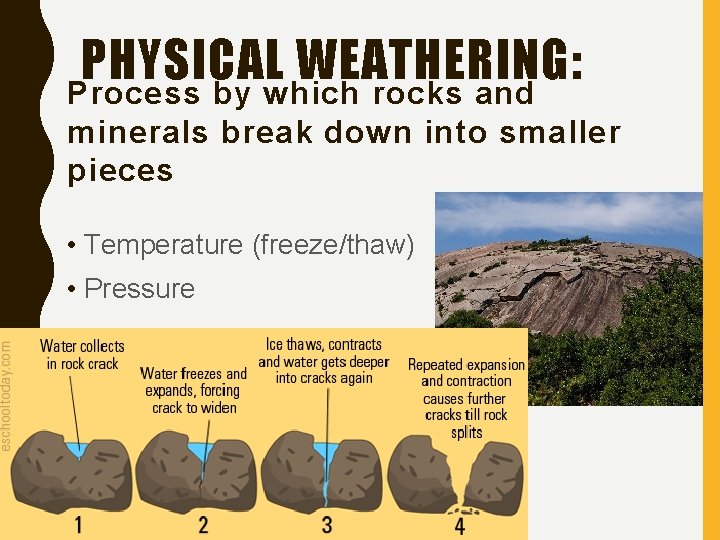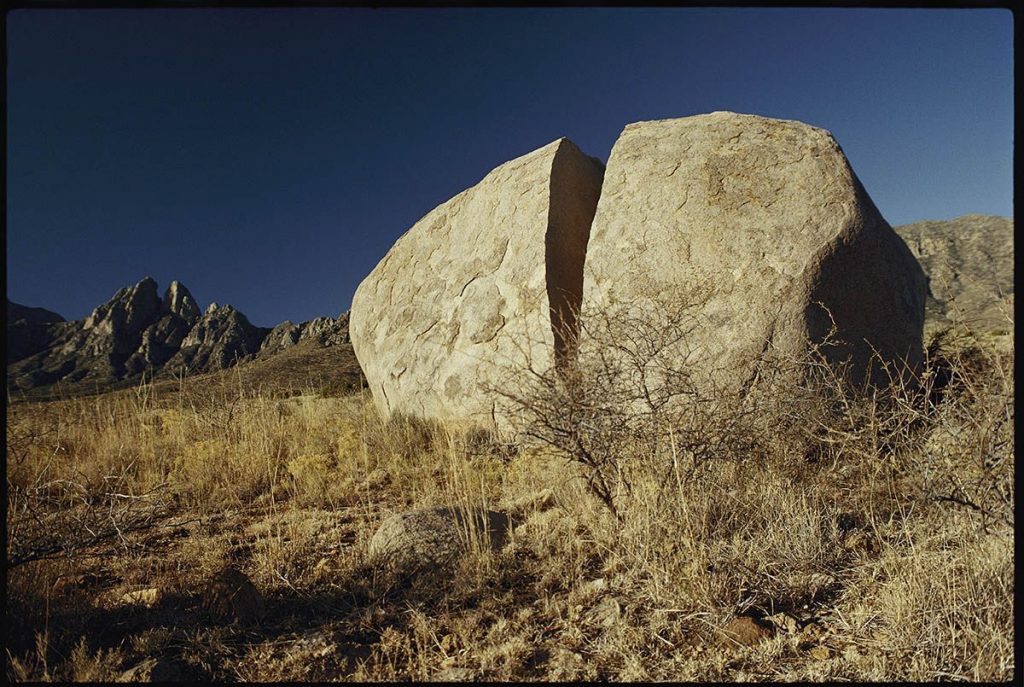There are three types of weathering – Physical weathering, chemical weathering, and biological weathering.
Our focus today will be on physical weathering, the processes involved, agents, and examples.
What is Physical weathering?
Physical weathering is also known as mechanical weathering in geography and it is a process of weathering caused by physical disintegration in which rock materials are broken increasingly into smaller fractions by physical factors with a resultant no effect of chemical changes.
The best definition of mechanical weathering could also be the cracking of rock due to the freezing and thawing of water, that’s the best example of physical weathering.
However, one of the importance of physical weathering is that it aids in enlarging or widening the area of weathering as a result of an increase in the surface area of the rock.
This larger surface area increases the ability or the capacity of chemical weathering.
Causes of Physical or Mechanical weathering
The causes of physical weathering are natural elements such as hot temperature, ice, pressure, water, wind, gravity, frost, etc.
Don’t get confused, causes of mechanical weathering are also seen as the agents of physical weathering or examples of the processes involved in it.
Types of Physical weathering
Physical weathering occurs in different ways, for example as a result of thermal expansion, salt crystal growth, frost wedging, impacts and collision, water and wind abrasion, unloading and exfoliation, root wedging, sheeting, etc.
However, the main types of physical weathering are Frost wedging, Unloading, thermal expansion, Abrasion, Collision.
Agents of physical weathering
To summarize the factors responsible for mechanical weathering, here are the main agents of physical weathering.
- Pressure release and unloading
- Growth of foreign crystal
- Thermo-expansion and contraction
- Plants and animals
- Abrasion
Pressure release and unloading
Rocks usually are formed below the earth’s crust or at certain depths within the earth’s crust which then means they are within a region of high pressure and removal of overlying materials through mainly erosion process, leading to a reduction in the pressure, thus, creating expansion within the rocks.
The result of this expansion is that cracks and rupture occur wither along joint or lines of weakness and thereby leading to disintegration which is referred to as exfoliation.
Growth of foreign crystals
The confinement of water within the rocks may result in freezing as a result of the coolness of the atmosphere.
This may result in an expansion that generates very large stresses within the rock.
The volume of water that may be in the rock might increase and now have a greater force to cause literally split, this could be 40 times greater.
Foreign crystals, for example, ice and other salts for example gypsum and rainwater can cause this stress to occur.
Thermo-expansion and contraction
On very hot days, rocks would expand because of solar heating or earth warming and then contracts as the temperature cools down.
This alternate heating and cooling as a result of increase and decrease in temperature results in cracks due to the stress the rock undergoes.
Plants
These processes are very variable owing to animals being variable and they have their ways of affecting rocks.
A plant can sometimes be found growing on existing rocks whether in cracks or within the crevices.
Other smaller plants for example mosses, lichens, algae, etc. are also capable of growing on rocks a sometimes secrete some organic acids which then act on the rock causing weakness.
Plants also can cause expansion on rocks by the proliferation of the roots within the crevices of the rocks,
The growth and enlargement will further weaken or crack the tricks – animals in turn are variable.
Animals
Animals such as lizards, frogs, toads, ants, termites, snails, earthworms centipedes, millipede, rabbit, crustaceans, including man can aid mechanical weathering.
These animals for example rabbits (rodents in general) can burrow into the rocks.
The ways created by them can be used by other bigger animals, thereby increasing the weakness and resistance of rocks.
The amphibians can also cause weaknesses on rocks by habiting the hollows created by rodents.
Ants, termites by their burrowing nature can leave tiny holes on rocks which can then be used by either larger animals – a man by his manipulation can affect the breakdown of rocks through the following
- Farrowing by cropping the land
- Use of implements for example Tractors
- Construction, for example, bridge, and road and other constructional activities
- Excavation through mining
- Drilling for bore-hole and petroleum prospecting.









